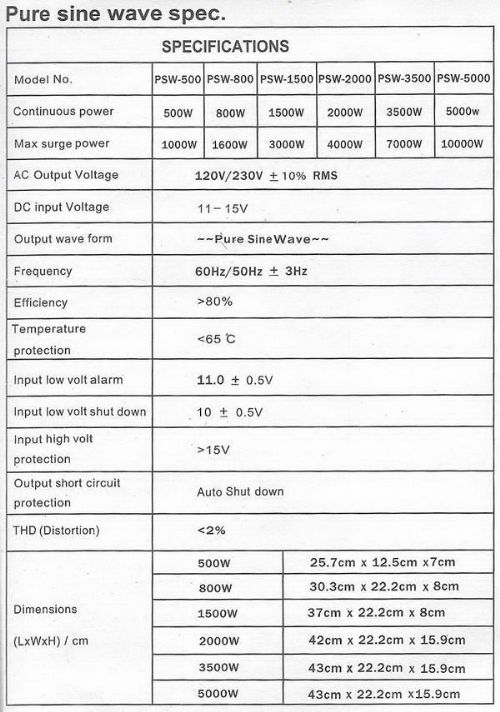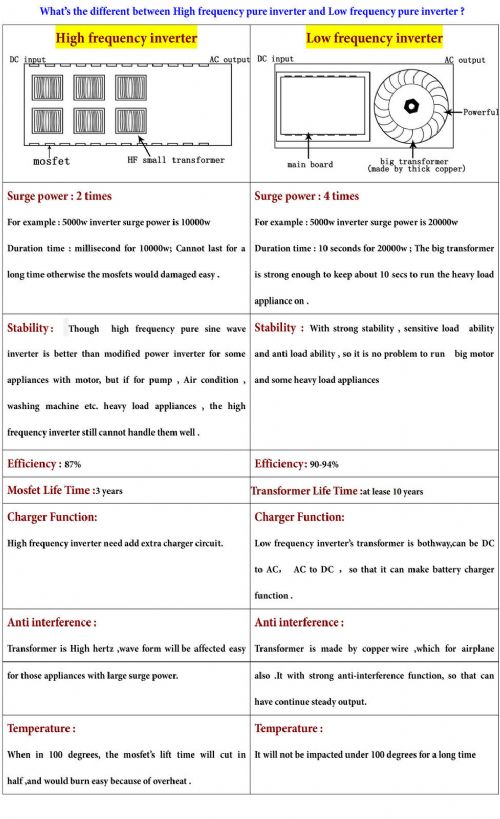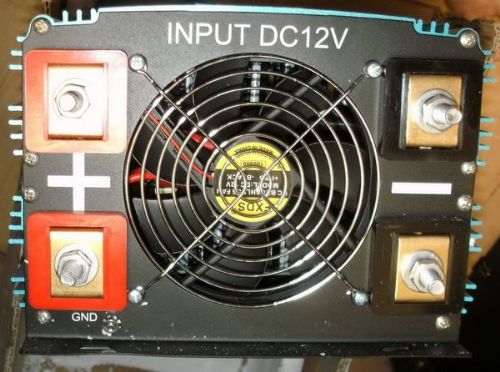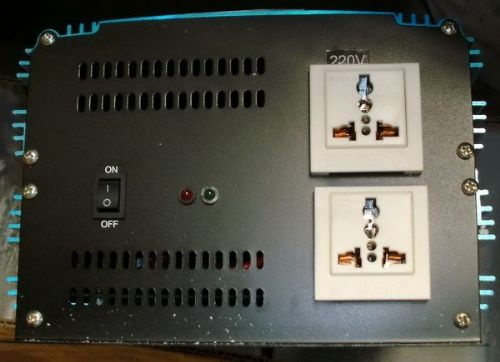
|

|
Forum Index : Other Stuff : Battery Rescue?
| Author | Message | ||||
| VK4AYQ Guru Joined: 02/12/2009 Location: AustraliaPosts: 2539 |
Hi Jkis I experimented with round plate batteries in the early days, the lead was standard 12 inch wide flashing lead which at the time was available through the roofing suppliers, i made a set of forming rollers which the lead was passed through this process punched holes in the lead to give more whetted area on the plate it also increased the length of the roll due to the softness of the lead, the plates where supported by a top half clar one each side one for positive and one for negative once the two plates where rolled on a former 2 inch poly pipe with the woven fiberglass cloth strips in between the claws where placed over the top of the plate and the solder held them in. The case was 5 inch irrigation PVC pipe with standard caps glued on the bottom and a screw cap on the top with the two terminals projecting through the cap, a terminal was then soldered to these projections result was a bug heavy 2 volt Lead Acid cell, It took a lot of work just to make a cell and they didn't have much capacity initially until a few charge cycles, as it took a while for the plate chemistry to establish and form. At the time I decided it was too much trouble and cheaper to buy batteries, I still think that is the case. If the concept was factory made it could be a possibility as I have seen the concept on new wiz bang batteries marketed now. I have often thought it would be good way to make NIFE cells in a production style facility but my get up and go has got up and went so I leave that to someone younger and richer than I. All the best Bob Foolin Around |
||||
| jkis Newbie Joined: 31/07/2014 Location: AustraliaPosts: 16 |
thank you guy's, with battery's being 2 volts per cell what holds them at that, would making bigger cells just give more storage amps. Bob sorry but i'm trying to jog your memory here, what length of lead do i need per cell what size holes are needed and how far apart what grade fiberglass 225 or 600 cheers stuart |
||||
| VK4AYQ Guru Joined: 02/12/2009 Location: AustraliaPosts: 2539 |
Hi Jkis The voltage is determined by the electron chemical reaction of the electrolyte, while it can vary a little bit with the strength of the electrolyte, it is tied to the chemical reaction of the electrolyte to the plate material. The more the plate area the more amps the battery will deliver but does not affect the standing voltage. I used 2 rolls of flashing lead from memory they where 1 foot wide by 12 foot long after going through the punch rollers it was about 20 foot long, as the metal was displaced lengthwise more than width wise, the punches where 3 mm diameter tapered slightly and from memory about 6 mm apart, the rollers where salvaged from a machine I picked up at auction and mounted in a heavy frame with a geared motor drive also from the original machine, to make a set of rollers like that would cost a fortune now, but if you had the time you could make a punch to do something similar or drill the holes and accept the waste of lead. The weight of the lead in a cell has a bearing on the amps capacity so the more lead the more amps assuming the plate conditioning is OK, do not expect to get the same output as a composite cell as they are conditioned to give more amps per plate area by the spongy lead fill in the plate grid. The glass cloth I used was a roll I had laying around from a boat building project, it was used to cover the plywood, it was fairly thin so I cut it into strips and used three layers from memory, that was only a bit over 1 mm thick, I do think it would have been better a bit thicker. As I said before that unless you can automate the process you would be better of buying some good batteries, If you are just doing it as an experiment go for a smaller battery as the ones I made where very heavy. Good luck with the project and let us know how you go with it. All the best Bob Foolin Around |
||||
| powerednut Senior Member Joined: 09/12/2009 Location: AustraliaPosts: 221 |
The 2 volts comes from the battery chemistry. once charged a lead acid cell will sit at about 2 volts. I had a great tutorial once which went into the chemistry for pretty much every type imaginable, and how to work out what the voltage would be, but I'm buggered if I can find it now. This one isn't too bad, but doesn't have any where near the detail of the other one I had: http://www.powerstream.com/BatteryFAQ.html Basically if you have the two lead plates in a dilute sulphuric acid solution you'll get around 2V once the plates have formed (formed lead dioxide on one and i've forgotten what on the other) through the initial charging process. There are also some guides out there somewhere on how to "form" the plates properly. in very simple terms bigger plates gives you more amp-hour capacity. if you want more volts you need more cells, which you combine in series to get the desired voltage. The chemistry changes when you change the electrolyte, which is why we get a lower voltage with the Alum electrolyte than we do with sulphuric acid. If your going to experiment with making lead acid batteries you might want to make jam jar sized ones first to get everything figured out for minimal cost. I'd start with two flat plates and work my way up from there. There are some nice youtube videos on battery making, but watch out for the crazys and scams. *edit* oh, and Bob's explanation above is much better than mine. read that. |
||||
| jkis Newbie Joined: 31/07/2014 Location: AustraliaPosts: 16 |
once again thank you for the reply's i'll chase up more on google and you tube, i was thinking on the optima style, i have 2 of them and was going to pull one apart when it died, 5 years later the 1st one is still going strong, with them being over the $300 price now, i didnt realize it would take so much to make 1 cell, so i'm short on lead too. cheers stuart |
||||
| VK4AYQ Guru Joined: 02/12/2009 Location: AustraliaPosts: 2539 |
Hi All A few postings ago I showed you a picture of my batteries that got burnt in the fire in my shed, i had written them off as useless due to their physical condition and the damage to the plate structure and a melted off terminal, after pulling them out from under a heap of junk this week I measured the voltage and got a bit over one volt one each battery, I decided to give them a go at rejuvenation just for the heck of it not really expecting much to come from it. 
After cleaning the ashes, melted plastic and lead bits of the top of the plate packs I found they where more or less intact a bit singed and the top membrane burnt away, a couple of liters of distilled water got them whetted down again. I connected my trickle charger and the desulphator up in 12 volt mode and you can see the results on the photo above after 24 hours, with the charger switched off they hold just on 12 volts so there may be hope for them yet. They look terrible and my wife said "you will never get those batteries working again" a couple of weeks on the desulphator and I might have an UGLY battery but it maybe useful for something. Fingers crossed. All the best Bob Foolin Around |
||||
Madog Newbie Joined: 27/01/2009 Location: AustraliaPosts: 25 |
Young Bob, As you appear to be a battery off grid Guru. I want to set up several battery's for my Cabin off the main house in Sydney. Obviously, I have power and I purchased a 3'300w (6'000w peak) Pure sine inverter a few years ago. I was badly burnt in an accident  working with Petrol 3 yrs ago, so things were delayed until know. working with Petrol 3 yrs ago, so things were delayed until know.
I want to know is there a system that I can set-up to between my Room & the main single line feed into my cabin ? I would like my battery's to power my cabin Without feeding back into the Grid. So when the battery bank get low, the grid Automatic powers my cabin. Regards, Den Small minds discuss people, Average minds discuss events, Great minds discuss ideas, Be GREAT ! See this Great engine with No Crankshaft: http://www.revetec.com |
||||
| VK4AYQ Guru Joined: 02/12/2009 Location: AustraliaPosts: 2539 |
Hi Madog Sorry to hear of your misfortune with the fire , that can be very painful and debilitating. A few questions, What size battery bank do you propose. What voltage is your inverter. What do you want to run in the cabin. What is the charging mode for your batteries. Yes it can be done reasonably simply using the controller being discussed in the forum at the moment it is designed as a charge controller and could be used to switch on your battery charger at a chosen voltage say 12 volts and switch off again when the batteries reach 15 volts, leaving this in circuit all the time it will allow you to run of the batteries all the time thereby avoiding the need for an electrician to connect up a 240 volt system switching into your load items. If it where my setup I would look seriously at using 12 volt appliances wherever possible to avoid conversion losses, car radio, 12 volt TV, LED lighting for example. There is a large range of 12 volt devices available now at reasonable prices depending on what your life expectations are, keep it simple and run all sorts of things but forget trying to run heavy loads such as electric kettle and stove toaster oven. All the best Bob Foolin Around |
||||
| VK4AYQ Guru Joined: 02/12/2009 Location: AustraliaPosts: 2539 |
Hi All I checked on how the batteries are going this morning, and all is looking promising, the little trickle charger is switching of and on now indicating that the batteries are accepting a reasonable rate of charge, the on cycle is 14 volts and the off cycle is 12.2 volts so that is now enough to keep the desulphator working across the both cycles, so that's a positive. When the batteries get nearer to a full charge it will settle down to a steady 4 amp charge, with a battery of this size that could take a week. I had a scratch around the plate envelope and found an opening to the plate for an inspection, which looks in good condition considering what it has been through. The plate is 5 MM thick lead so that will give an idea on the quality of the battery, normal automotive plates I have measures are between 1 mm and 1.5 mm on so called deep cycle batteries. All the best Bob Foolin Around |
||||
Madog Newbie Joined: 27/01/2009 Location: AustraliaPosts: 25 |
Answers, What size battery bank do you propose. GOT 2 12v, 110ah battery's, Possibly 4+ more coming= JUST STARTED collecting. What voltage is your inverter.12v,3000w (6000peak), it has heavy 2 Neg and Pos terminals with fans, says it is about 85% efficient. What do you want to run in the cabin.When hot 3kw Air con day time if hot, a Fridge, Microwave,Computer 16 hr 7days, oven rarely. What is the charging mode for your batteries.currently only have 3 small 12v Solar cells, I have a 240v desulphator battery charger, looking at getting a 4 panel, 1kW pole mounted, duel axis tracking Solar. Have natural gas for water & stove. Yes it can be done reasonably simply using the controller being discussed in the forum at the moment it is designed as a charge controller Any images & approx. costs ??? and could be used to switch on your battery charger at a chosen voltage say 12 volts and switch off again when the batteries reach 15 volts, leaving this in circuit all the time it will allow you to run of the batteries all the time thereby avoiding the need for an electrician to connect up a 240 volt system switching into your load items. Not going totaly Green & FOC yet. Den Small minds discuss people, Average minds discuss events, Great minds discuss ideas, Be GREAT ! See this Great engine with No Crankshaft: http://www.revetec.com |
||||
| VK4AYQ Guru Joined: 02/12/2009 Location: AustraliaPosts: 2539 |
Hi Madog This is the controller I was referring to can be made for around $25. http://www.thebackshed.com/forum/forum_posts.asp?TID=7173 Batteries OK the more the better. Try for over 1000 AH that gives about 330 AH usable power. Voltage OK, The Inverter is it a high frequency or a low frequency unit A 3KW AC is a jaw dropper for the inverter Run current around 300 AH start current around 1500 AH if your inverter is a high frequency one it will die quickly if it is a low frequency one it will die slowly, I do not think a small 12 Volt system is practical to run an AC, maybe you should look at an evaporation cooler or dig up the back lawn and make a geothermal cooler. Battery charger is OK if output is more than 10 amps, there are small chest type fridges 60 liter capacity that use about 4.5 amps, or you could use a 240 volt unit on your inverter if it will handle the start current without blowing the Fet's. Inverter type microwave of no more than 1KW rating should be OK, expect 150 amp surge current from the batteries. Remember to work on a 35% discharge from your batteries otherwise battery life will be short. A laptop computer would be OK with a boost module run direct off the batteries, 6AH approx TV get a 12 volt one, the one I have is a 19 inch and draws 4.5 amps on 12 volt. A conventional computer desktop use around 250 watts around 35 amps per hour out of your batteries if used on the inverter. If you minimize your loads the 1 KW panels would be OK but they will only give 5 - 6 KW a day 500 to 600 AH total less conversion losses @ 80% 400 AH to 480 AH, and under usual conditions that is enough to run a 3 KW AC for 1 .5 hours if your inverter doesn't die. Hope this helps All the best Bob Foolin Around |
||||
| VK4AYQ Guru Joined: 02/12/2009 Location: AustraliaPosts: 2539 |
Hi Madog Follow the Ebay links and have a look at the 3000 watt unit I believe you have it will give you some idea to its limitations in the comparison table with the 3000 watt Low Frequency unit. pt=AU_Boat_Parts_Accessories&hash=item3f3ee92529 http://www.ebay.com.au/itm/12V-Power-Inverter-3000w-Max-6000 w-220V-230V-240V-AC-Power-Tool-RV-Car-/271638406441?pt=AU_Bo at_Parts_Accessories&hash=item3f3ee92529 All the best Bob Foolin Around |
||||
Madog Newbie Joined: 27/01/2009 Location: AustraliaPosts: 25 |
Look a little bewildering, with all my Gadgets. However, the battery bank will be eventually be going to my Bush shack, once I get it working in my urban shack. This is the file of my inverter, it is double the height of the ebay inverter link above, looks like the same brand, is the below one any good ? 
Small minds discuss people, Average minds discuss events, Great minds discuss ideas, Be GREAT ! See this Great engine with No Crankshaft: http://www.revetec.com |
||||
| dwyer Guru Joined: 19/09/2005 Location: AustraliaPosts: 574 |
Hi Madog Look at this specification this one showing that have pure wavesine and other on ebay state Modify sinewave make me wonder or my mistake if both are same brand Dwyer |
||||
Madog Newbie Joined: 27/01/2009 Location: AustraliaPosts: 25 |
Just dragged it out & had a look, it is a Power Jack PSW-3500, mine says 6'000peak on the sticker. Supposed to be a Grid Tie Inverter. Cost me $250 a few yrs ago. Probably won't work.   Small minds discuss people, Average minds discuss events, Great minds discuss ideas, Be GREAT ! See this Great engine with No Crankshaft: http://www.revetec.com |
||||
| VK4AYQ Guru Joined: 02/12/2009 Location: AustraliaPosts: 2539 |
Hi maddog The rating game is very optimistic with power jack I have found that useing them over fifty percent of rated power means rapid failure, very bad on inductive or reactive loads. If you are going ahead with your project invest in a LF late model unit, I have got several for testing, but in hosspiddle at the moment so hands tied. Would suggest to go 24volt DC 8000 watt unit if you want any serious results. All the best Bob Foolin Around |
||||
Madog Newbie Joined: 27/01/2009 Location: AustraliaPosts: 25 |
Not sure what a LF late model unit is, will have to be a search. Will also search for A 24volt DC 8000 watt unit. However, I was thinking these days a new or second hand, external Aurora 3+kW Inverter would be a better Grid or Stand alone Inverter choice, they are apparently 97% efficient, compared to 80% of my old beast. I hope hospital is temporary visit. Regards, Den Small minds discuss people, Average minds discuss events, Great minds discuss ideas, Be GREAT ! See this Great engine with No Crankshaft: http://www.revetec.com |
||||
Madog Newbie Joined: 27/01/2009 Location: AustraliaPosts: 25 |
Thanks Bob. This is what I found; 
Looks like there is a big differenc between the Hi & Lo Frequency models. Mine is 44cm x 23cm x 15cm, has a big Fan, see below; 

Small minds discuss people, Average minds discuss events, Great minds discuss ideas, Be GREAT ! See this Great engine with No Crankshaft: http://www.revetec.com |
||||
| VK4AYQ Guru Joined: 02/12/2009 Location: AustraliaPosts: 2539 |
Hi Madog The voltage conversion on of unit is done by a large torriodal Tran former which to me is a far more effective way to go, possibly 95% efficient, and gets ri of the horrible HF switching section, also has a sbstancial battery charger built in. The best quality inverter youcanafford is the best investment. All the best Bob Foolin Around |
||||
| BobD Guru Joined: 07/12/2011 Location: AustraliaPosts: 935 |
This may be a little off topic but I think it qualifies for here. My car battery is about 4.5 to 5 years old (April 2010 Ford Falcon). It's working OK but it gets a bit fragile when I do a few short trips to the shops. I put it on my 6A regulated charger and it comes up OK. I had a look down the holes (it's not SLA) and I see the large bus in there and in different cells it's either whitish or brown. Is this any useful indication of its future lifespan? I suspect it must be fading a bit because of its age. Any thoughts would be appreciated. Bob |
||||